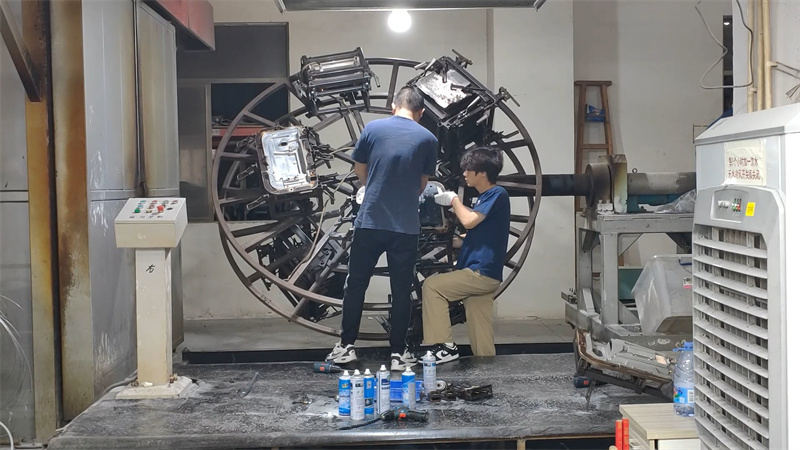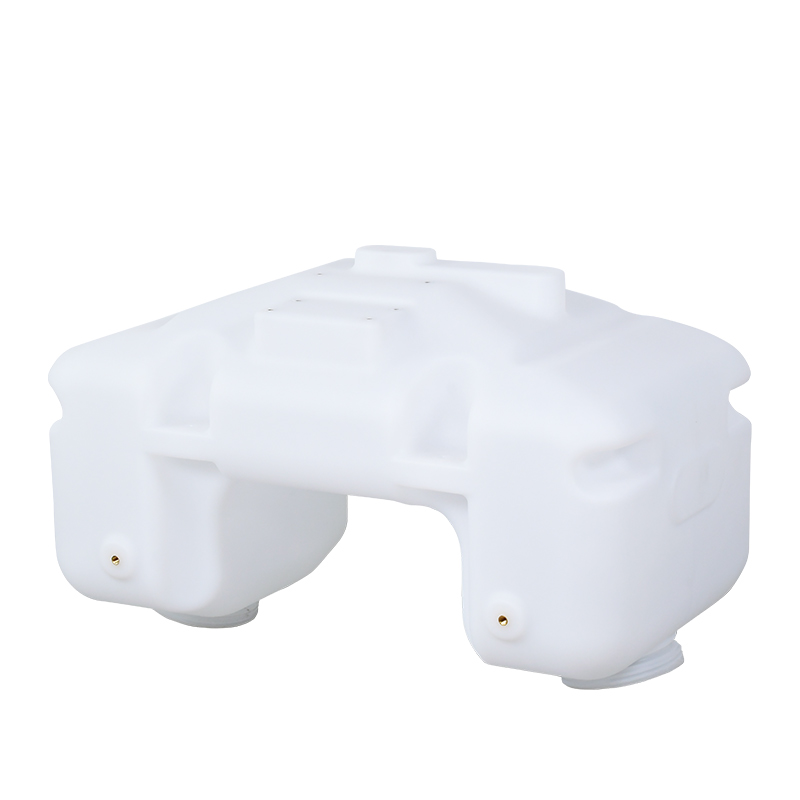What are the Causes of Sticking and Jamming in the Rotational Molding Process
 May 14,2025
May 14,2025

What are the Causes of Sticking and Jamming in the Rotational Molding Process?
The rotational molding process, also known as rotomolding process is a highly versatile manufacturing method used to produce a wide range of hollow plastic products. From large storage tanks and playground equipment to intricate medical devices and consumer goods, rotational molding offers design flexibility, durability, and cost-effectiveness. However, like any manufacturing process, it’s not without its challenges. Rotomolding factories often encounter the issues of sticking and jamming of the products within the molds. Understanding these problems is crucial for rotational moulding factory, as it directly impacts the quality, efficiency, and cost - effectiveness of the production process.

What are Sticking and Jamming in Rotomolding?
Sticking, in the context of the rotational molding process, refers to the situation where the molded product adheres too strongly to the mold surface. This makes it difficult or even impossible to remove the product from the mold without causing damage. On the other hand, jamming occurs when the product gets stuck within the mold cavity due to improper fit, excess material, or other factors, preventing its smooth extraction. Both sticking and jamming can lead to production delays, increased scrap rates, and higher production costs.
Causes of Sticking and Jamming
Mold Surface Conditions
One of the primary causes of sticking is an improper mold surface finish. If the mold surface is not smooth enough or has imperfections, the molten plastic during the rotomolding process may adhere to these irregularities. Additionally, the use of low - quality mold release agents, or improper application of them, can also contribute to sticking. A rotomolding factory must ensure that the mold surface is well - prepared and that high - quality release agents are used in the correct quantities and application methods.
Material - Specific Factors
The type of plastic material used in the rotational molding process plays a significant role in sticking and jamming. Some plastics have a higher tendency to adhere to the mold surface due to their chemical properties. For example, materials with high melting points may cool and solidify too quickly in contact with the mold, causing them to stick. Moreover, the moisture content and additives within the plastic material can also affect its behavior during the molding process. If the material is not properly dried or contains incompatible additives, it can lead to sticking or jamming issues.
Process Parameter Imbalances
Incorrect rotational molding process parameters can also result in these problems. For instance, if the rotational speed is too low, the plastic may not be evenly distributed within the mold, leading to thick and thin spots. Thick spots can cause jamming as they may not fit properly within the mold cavity during ejection. Similarly, if the heating and cooling cycles are not optimized, it can cause the plastic to stick to the mold. An experienced rotomolding factory will carefully calibrate and monitor process parameters such as temperature, rotation speed, and cycle times to prevent sticking and jamming.
Improper Mold Design
Poor mold design is another contributing factor. If the mold has sharp corners, undercuts, or complex geometries that are not properly designed for easy part ejection, it can lead to jamming. Additionally, insufficient draft angles on the mold walls can make it difficult for the product to be removed from the mold, increasing the likelihood of sticking. A well - designed mold, taking into account factors such as part geometry, draft angles, and ejection mechanisms, is essential for a smooth rotomolding process without sticking and jamming issues.
By understanding the causes of sticking and jamming in the rotational molding process and implementing appropriate preventive measures, rotational molding factories can effectively reduce the occurrence of these issues. This helps improve production efficiency, enhance rotomolded product quality, and meet customer demands for custom rotational molding products.
 Tel: 0086-13632687993
Tel: 0086-13632687993  Email: roto@lightvenus.com
Email: roto@lightvenus.com

 Home
Home How to Prevent Sticking and Jamming in Roto Molding Process
How to Prevent Sticking and Jamming in Roto Molding Process  You May Also Like
You May Also Like



 Tel
Tel
 Email
Email
 Address
Address








